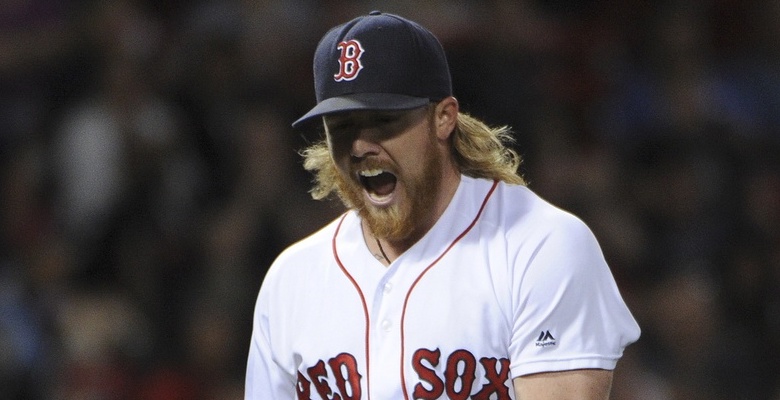Welcome to BP Boston’s second annual Roster Recap series. Over the next few months, we’ll be analyzing every player on Boston’s 40-man roster and many of their top prospects in order to provide a comprehensive overview of the Red Sox roster’s strengths and weaknesses, as well as what we can expect moving forward. From MVP-candidate right fielders to reserve relievers, we want to give you a look at every Red Sox who might matter in 2017. View the complete list of Roster Recaps here. Enjoy!
The Red Sox suffered from an inconsistent bullpen for much of 2016, with Craig Kimbrel mostly being backed up by good-but-not-great arms. One of those arms was Robbie Ross, the left-hander Boston received in return for Anthony Ranaudo a couple of years ago. When Ross was acquired, he was a swingman whose role and talent level was largely unknown. Since then, he’s stepped up and become the best left-handed reliever on the roster. Now, that probably says more about the roster than it says about Ross, but it’s also not at all a slight towards the southpaw’s performance. While he’s lumped in with the group of inconsistent arms in last season’s bullpen, he has been underratedly solid for two years in a row now.
What Went Right in 2016
A whole lot went right for Ross in 2016, which is how he ended up with a 3.25 ERA to go along with a 3.23 FIP, a 3.79 DRA (95 DRA-) and a 97 cFIP. That doesn’t indicate a dominant force, but it looks a lot like a pitcher who can comfortably be placed in the middle of a major-league bullpen.
Among the reasons for this relative success in 2016 was a significant rise in strikeouts. After spending most of his career with a strikeout rate in the high teens, Ross struck out 23.5 percent of his opponents last season. He backed that up with lower contact rates both in and out of the zone. This was likely the result of a change in repertoire that involved leaning much more heavily on his breaking balls and getting away from throwing his fastball 70 percent of the time.
Another side effect of this change in pitch mix is that Ross saw a lack of damaging batted balls coming off the bats of his opponents. The .302 BABIP he allowed is merely average, which is an improvement over the end of his Rangers career when he was allowing BABIPs in the mid-to-high .300s. Meanwhile, he also induced ground balls more than 50 percent of the time and served up just two home runs in his 55.1 innings.
Even beyond the tangible numbers, Ross was successful in a couple of other areas that often go underrated for a reliever. Many people see these bullpen arms as fungible assets that anyone can replace, but keeping your best relievers around all year can go a long way toward stability for a team. Ross was the master of both health and consistency in 2016. He was on the roster all year, appearing in 54 games to accrue those 55.1 innings. Beyond that, he didn’t have a calendar month in which he put up a FIP under 4.00. Now, there was a fairly significant ERA discrepancy, but that was based on sequencing more than anything. While his 4.71 ERA in the first half completely blew away his second half mark of 1.69, the peripherals actually favored the first half. Plus, his opponents performance was essentially the same throughout the year. Small samples can have strange effects on relievers, but for all intents and purposes Ross was the same guy all year and that shouldn’t go overlooked.
What Went Wrong in 2016
For as much praise as I’ve heaped on Ross so far in this, it wasn’t all roses. The main issue for the southpaw was his control. He’s never really been a control-oriented pitcher, but he had the worst walk rate of his career in 2016, allowing a free pass to just under 10 percent of his opponents. This could be another side effect of the repertoire change, as it goes without saying that fastballs are easier to get over the plate than breaking balls. It certainly showed up in his plate discipline stats, as it was the first season in which a majority of his pitches missed the zone.
What’s really strange is that the bulk of these control issues came against left-handed batters. While he struck out nearly a quarter of his left-handed opponents, he walked more than 13 percent of them as well. That’s an atrocious rate, particularly for someone who is supposed to be the best lefty in the bullpen. Again, being a top LOOGY option isn’t really what he’s built for, but it’s what the team could really use. At the very least, he needs to get his control under…well, control, against lefties.
What To Expect in 2017
Looking ahead to the coming season, I would expect nothing but the same from Ross. I’d expect him to be miscast as the best lefty in the bullpen, being flanked by guys like Fernando Abad, Robby Scott and Luis Ysla. In that role, he’ll keep up the strong combination of strikeouts and ground balls, disappointing delusional fans hoping for the next Andrew Miller. By now, though, he should be used to being underrated. If the bullpen falters again in 2017, he’ll keep getting thrown into the mix of underperforming arms, whether he deserves it or not.
Photo by Bob DeChiara/USA Today Sports Images
